Simulating Radio Frequency interactions in MRI
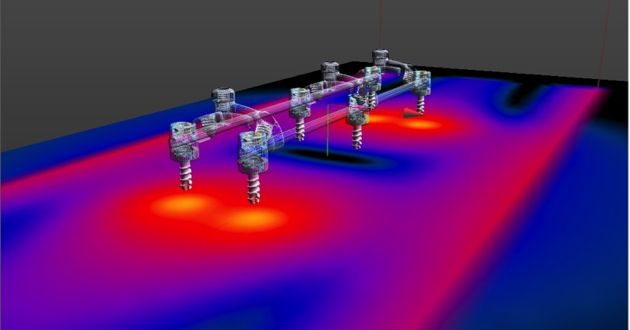
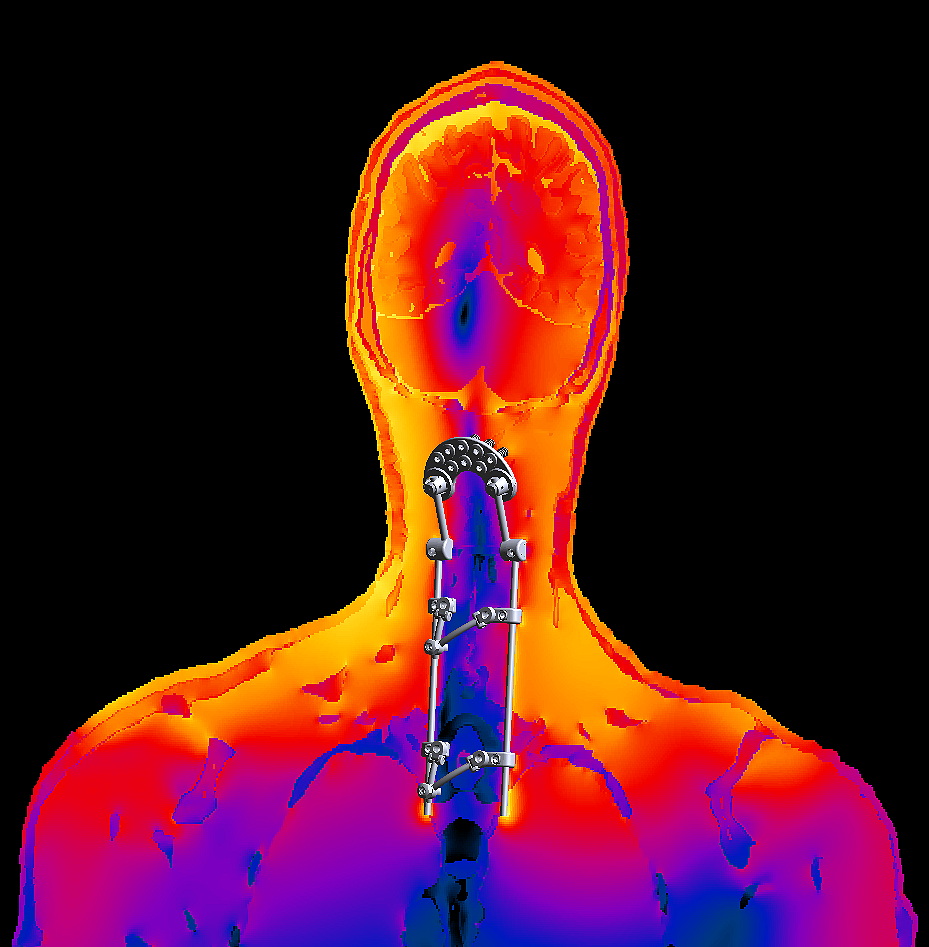
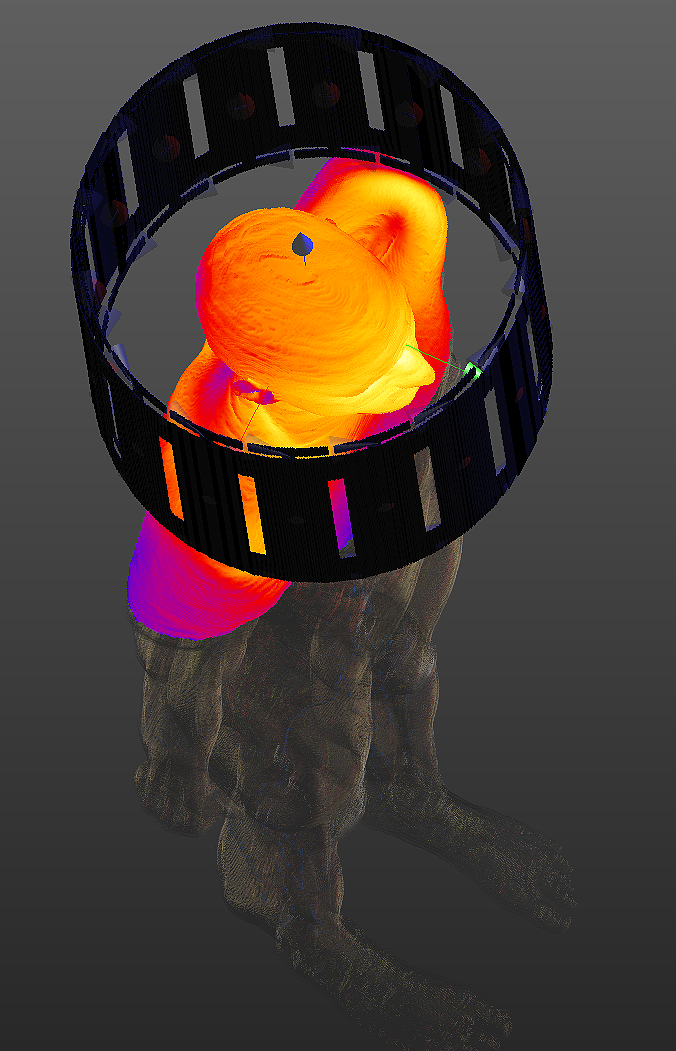 Radio frequency interactions with medical implants in MRI scanners are modelled to examine Specific Absorption Rates (SAR) and temperature distributions. Electric and Magnetic field distributions in these interactions are also examined. Medical devices are modelled using SolidWorks computer aided design software. These designs are imported into SemCad X & Sim4Life Electromagnetic Finite Difference Time Domain computational software. The SemCad X and Sim4Life simulations are run on Nvidia Tesla GPU to solve Maxwell's Electromagnetic Field Partial Differential Equations and Thermal Diffusion equations on a discrete mesh grid. Material properties are specified and electromagnetic and thermal interactions of medical implants in ASTM phantoms with electromagnetic plane waves (shown in the top picture on the left) and in birdcage radio frequency coils with phantoms are simulated. Python scripts and Matlab code is used to analyze results and produce images and spreadsheets in reports. Radio frequency interactions with birdcage coils are also simulated using virtual human models,shown in the two bottom pictures on the left. Click xMR Laboratory web page for more details and images including the image posted here.
Radio frequency interactions with medical implants in MRI scanners are modelled to examine Specific Absorption Rates (SAR) and temperature distributions. Electric and Magnetic field distributions in these interactions are also examined. Medical devices are modelled using SolidWorks computer aided design software. These designs are imported into SemCad X & Sim4Life Electromagnetic Finite Difference Time Domain computational software. The SemCad X and Sim4Life simulations are run on Nvidia Tesla GPU to solve Maxwell's Electromagnetic Field Partial Differential Equations and Thermal Diffusion equations on a discrete mesh grid. Material properties are specified and electromagnetic and thermal interactions of medical implants in ASTM phantoms with electromagnetic plane waves (shown in the top picture on the left) and in birdcage radio frequency coils with phantoms are simulated. Python scripts and Matlab code is used to analyze results and produce images and spreadsheets in reports. Radio frequency interactions with birdcage coils are also simulated using virtual human models,shown in the two bottom pictures on the left. Click xMR Laboratory web page for more details and images including the image posted here.
Software development- MRI image processing for Alzheimer's Disease:
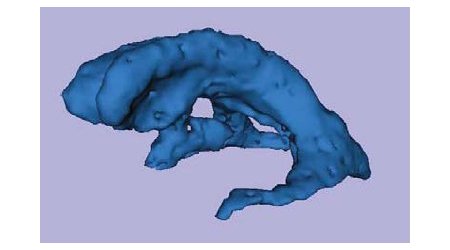 Brain ventricles (shown in the picture on the left) expand in size at different rates depending on whether a person is aging normally, has mild cognitive impairment (MCI),
or has Alzheimer disease (AD). Such pathological changes can be measured from repeated high resolution magnetic resonance imaging (MRI) of the
brain. Automated and accurate MRI image analysis algorithms must be implemented to detect these pathological and structural changes to track
disease progression or response to treatment. Our overall goal is to develop and implement advanced algorithms that adapt and combine several
segmentation approaches into a novel fully automated brain structure segmentation procedure using T1-weigthed MRI. I am currently developing a fully
automated algorithm for segmenting the lateral ventricles. Such an algorithm could aid in early diagnosis, increase
the efficiency of the evaluation of new drugs in clinical trials and impact clinical patient management. Click poster, and paper draft
Brain ventricles (shown in the picture on the left) expand in size at different rates depending on whether a person is aging normally, has mild cognitive impairment (MCI),
or has Alzheimer disease (AD). Such pathological changes can be measured from repeated high resolution magnetic resonance imaging (MRI) of the
brain. Automated and accurate MRI image analysis algorithms must be implemented to detect these pathological and structural changes to track
disease progression or response to treatment. Our overall goal is to develop and implement advanced algorithms that adapt and combine several
segmentation approaches into a novel fully automated brain structure segmentation procedure using T1-weigthed MRI. I am currently developing a fully
automated algorithm for segmenting the lateral ventricles. Such an algorithm could aid in early diagnosis, increase
the efficiency of the evaluation of new drugs in clinical trials and impact clinical patient management. Click poster, and paper draft
Simulation of Soft Condensed Matter Physics:
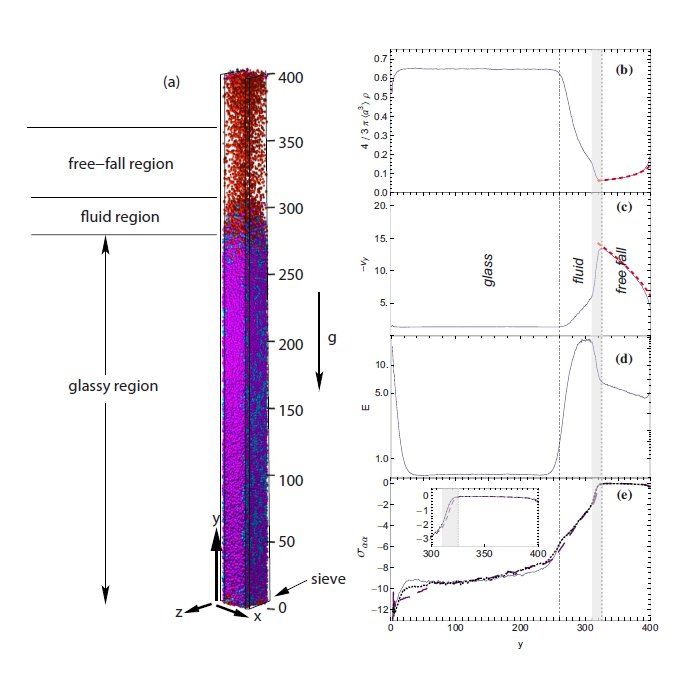 The state of matter in dense granular flow is neither fluid nor solid. Neighboring particles cage each other so that rearrangements are strongly suppressed. Nevertheless, grains do vibrate strongly within their individual cages and, occasionally, are able to break free. This results in an odd two-temperature picture, similar to that used to describe spin glasses. Collisions within a cage are not isotropic and can transfer momentum and energy coherently, resulting in a network of collision chains. The resulting model of the stress tensor is very similar to fixed principal axes models recently suggested for static granular material and suggests the origin of this structure may be found in the dynamics. Click for movie of simulation of gravity driven flow (red balls fastest, blue balls slowest).
The state of matter in dense granular flow is neither fluid nor solid. Neighboring particles cage each other so that rearrangements are strongly suppressed. Nevertheless, grains do vibrate strongly within their individual cages and, occasionally, are able to break free. This results in an odd two-temperature picture, similar to that used to describe spin glasses. Collisions within a cage are not isotropic and can transfer momentum and energy coherently, resulting in a network of collision chains. The resulting model of the stress tensor is very similar to fixed principal axes models recently suggested for static granular material and suggests the origin of this structure may be found in the dynamics. Click for movie of simulation of gravity driven flow (red balls fastest, blue balls slowest).
Granular matter:
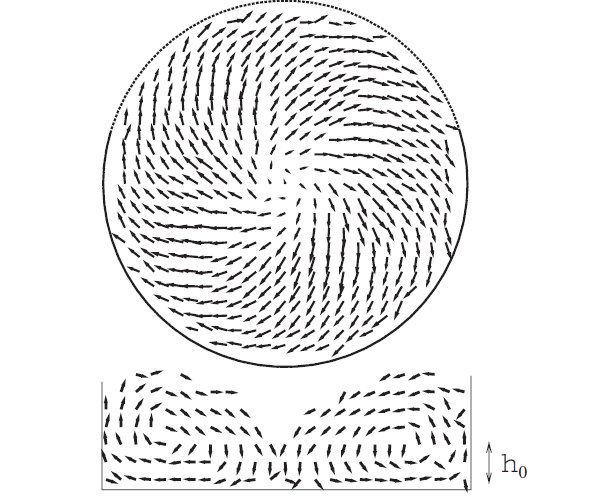 Granular flows due to simultaneous vertical and horizontal excitations of a flat-bottomed cylindrical pan are investigated using event-driven molecular dynamics simulations. In agreement with recent experimental results, we observe a transition from a solidlike state to a fluidized state in which circulatory flow occurs simultaneously in the radial and tangential directions. By going beyond the range of conditions explored experimentally, we find that each of these circulations reverses its direction as a function of the control parameters of the motion. We numerically evaluate the dynamical phase diagram for this system and show, using a simple model, that the solid-fluid transition can be understood in terms of a critical value of the radial acceleration of the pan bottom and that the circulation reversals are controlled by the phase shift relating the horizontal and vertical components of the vibrations. We also discuss the crucial role played by the geometry of the boundary conditions and point out a relationship of the circulation observed here and the flows generated in vibratory conveyors. Click cylindrical pan movie of simulation produced by Post-Doctoral Fellow Oleh Baran, vibratory drum grinding mill movie of simulation produced by me under guidance of Dr. Oleh Baran, Dr. Peter Poole, and Dr.-Ing. Robert Martinuzzi and presentation.
Granular flows due to simultaneous vertical and horizontal excitations of a flat-bottomed cylindrical pan are investigated using event-driven molecular dynamics simulations. In agreement with recent experimental results, we observe a transition from a solidlike state to a fluidized state in which circulatory flow occurs simultaneously in the radial and tangential directions. By going beyond the range of conditions explored experimentally, we find that each of these circulations reverses its direction as a function of the control parameters of the motion. We numerically evaluate the dynamical phase diagram for this system and show, using a simple model, that the solid-fluid transition can be understood in terms of a critical value of the radial acceleration of the pan bottom and that the circulation reversals are controlled by the phase shift relating the horizontal and vertical components of the vibrations. We also discuss the crucial role played by the geometry of the boundary conditions and point out a relationship of the circulation observed here and the flows generated in vibratory conveyors. Click cylindrical pan movie of simulation produced by Post-Doctoral Fellow Oleh Baran, vibratory drum grinding mill movie of simulation produced by me under guidance of Dr. Oleh Baran, Dr. Peter Poole, and Dr.-Ing. Robert Martinuzzi and presentation.
Gravitational Waves:
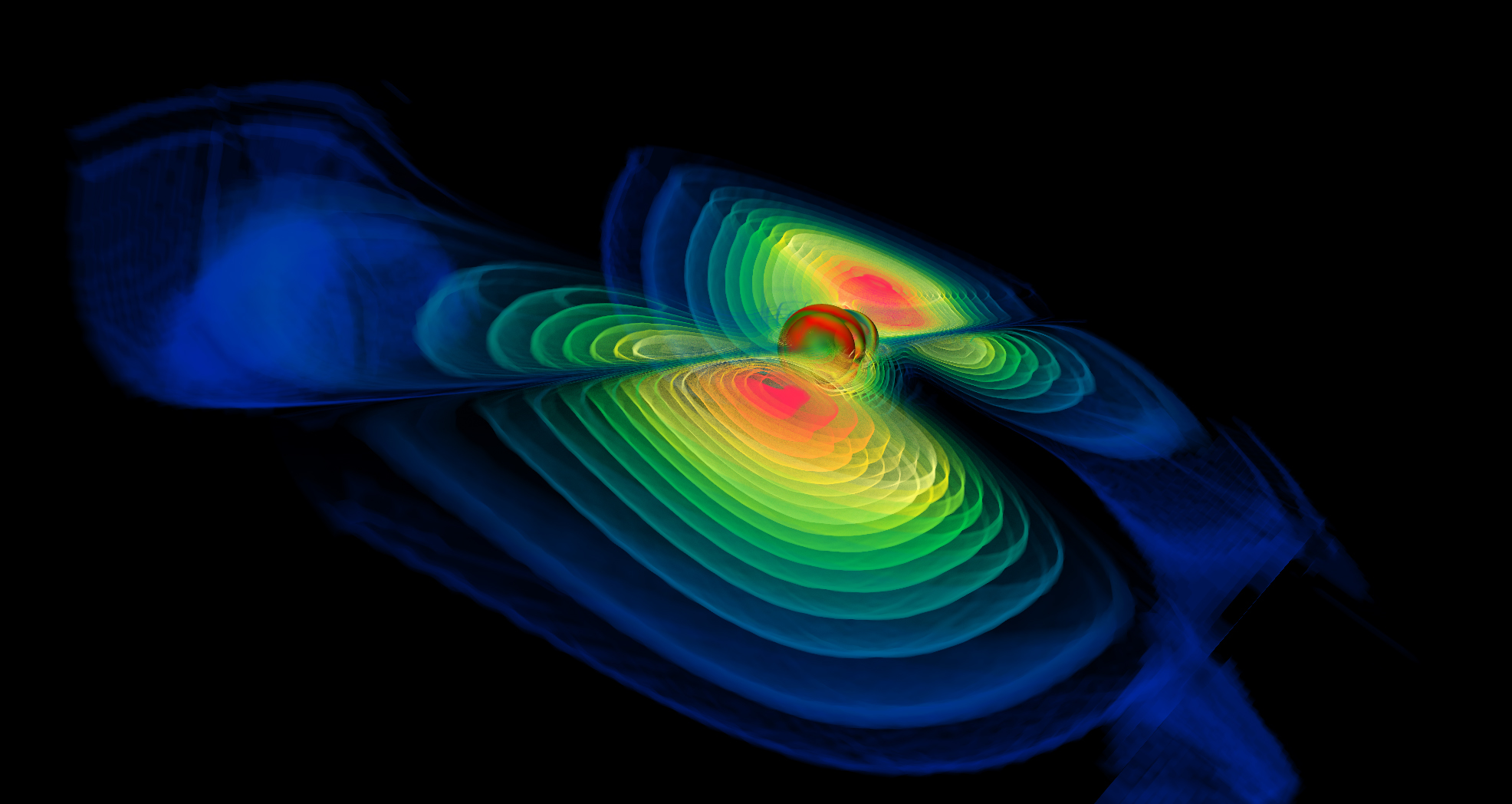 Einstein's theory of general relativity predicts that gravitational waves (also known as ripples of spacetime curvature) can radiate from astrophysical sources such as binary colliding black holes orbiting one another. Today the push is on to devise methods to detect these gravitational waves with multi-billion dollar interferometer projects. Scientists face mathematical and computational challenges in the analysis of nonlinear generation and propagation of gravitational waves and face many technological challenges in designing equipment to successfully detect gravitational waves. Once these waves are detected, the symphony of gravitational signals, as Kip Thorne says, will be able to reveal exciting information never before known about the inspiral, merger and ringdown of astrophysical sources, and who knows what else lies ahead to discover.
Einstein's theory of general relativity predicts that gravitational waves (also known as ripples of spacetime curvature) can radiate from astrophysical sources such as binary colliding black holes orbiting one another. Today the push is on to devise methods to detect these gravitational waves with multi-billion dollar interferometer projects. Scientists face mathematical and computational challenges in the analysis of nonlinear generation and propagation of gravitational waves and face many technological challenges in designing equipment to successfully detect gravitational waves. Once these waves are detected, the symphony of gravitational signals, as Kip Thorne says, will be able to reveal exciting information never before known about the inspiral, merger and ringdown of astrophysical sources, and who knows what else lies ahead to discover.
Gravitational Waves From Astrophysical Sources: Applied Math 521b General Relativity course project and presentation.
Click here for movies MillsecPulsarGravitywave.mpg, MillisecPulsarShot1.mpg, MillisecPulsarSuperNova.mpg, MillisecPulsarSurfaceExp.mpg, and MillisecPulsarTopView.mpg.